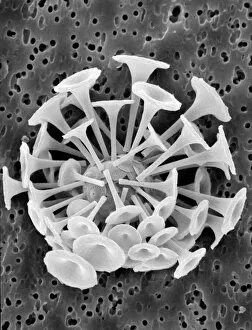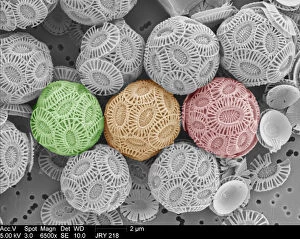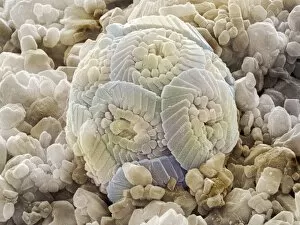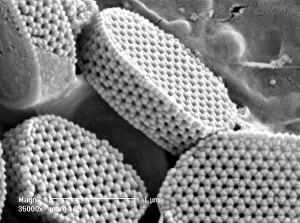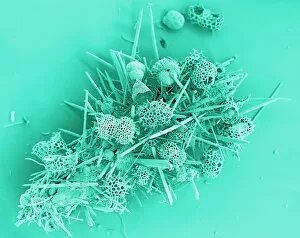Coccolith Collection
"Coccolith: The Intricate World of Calcareous Phytoplankton Revealed Through SEM" Delving into the microscopic realm of marine life
All Professionally Made to Order for Quick Shipping
"Coccolith: The Intricate World of Calcareous Phytoplankton Revealed Through SEM" Delving into the microscopic realm of marine life, we encounter the fascinating world of coccoliths - calcareous phytoplankton that leave an indelible mark on our oceans. Under the scanning electron microscope (SEM), these delicate structures come to life, showcasing their intricate beauty and ecological significance. One such captivating species is Discosphaera tubifera, a coccolithophore known for its distinctive tube-like shape. Its meticulously arranged coccoliths form an elegant armor around its cell, providing protection against predators and environmental stressors. Exploring further, we stumble upon Emiliana huxleyi, another remarkable coccolithophore with its own unique charm. Its intricately sculpted coccoliths create stunning patterns reminiscent of snowflakes or mandalas. These tiny masterpieces not only contribute to global carbon cycling but also play a crucial role in regulating Earth's climate by reflecting sunlight back into space. Moving on to Acanthoica acanthifera, we encounter a mesmerizing coccosphere composed of numerous interconnected coccoliths. This spherical structure acts as both a shield and buoyancy device for this single-celled organism as it drifts through ocean currents. Amongst these diverse forms lies Emiliania huxleyi - one of the most abundant and widespread species in our oceans today. Its exquisite white calcite plates form vast blooms visible from space, leaving an awe-inspiring imprint on our planet's surface. Syracosphaera anthos captures our attention next with its vibrant hues and intricate design. These strikingly beautiful discs are adorned with spines that serve various purposes including defense against grazers and enhancing buoyancy control. Through SEM images like Picture No.

